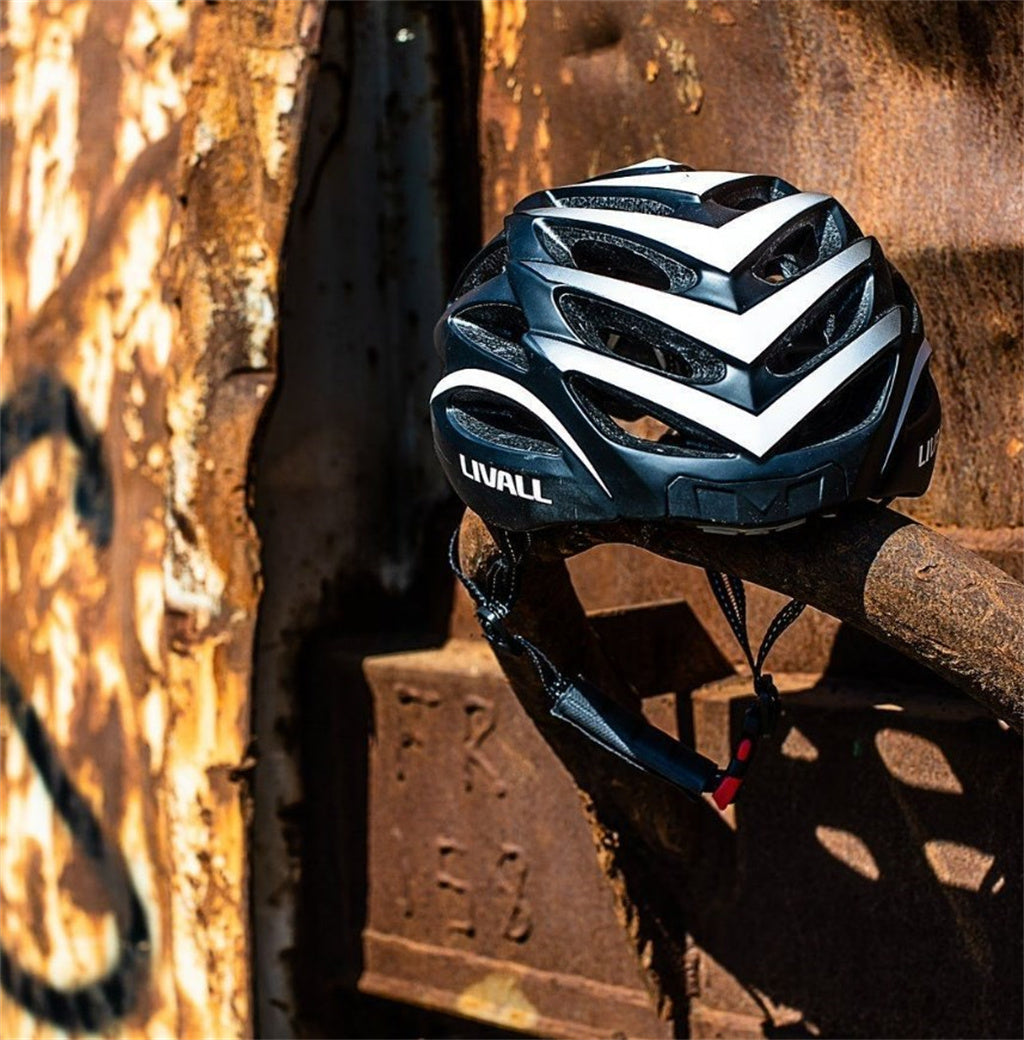Thinking about motorcycle riding? here's a detailed cost breakdown to get you started
So, you're thinking about diving into the thrilling world of motorcycle riding? Before you hit the open road, it's crucial to understand the various costs involved. Starting from the initial purchase to ongoing expenses, we'll break down everything you need to know to budget effectively.
Motorcycle Purchase
The most significant initial cost is, of course, the motorcycle itself. Prices can vary widely depending on whether you buy new or used, and what type of bike you choose. A new motorcycle can cost anywhere from $5,000 to $30,000, depending on the make and model. High-end brands like Harley-Davidson and BMW can be on the pricier side, while budget-friendly options like Honda and Yamaha offer great value for money. Used motorcycles are generally more affordable, with prices ranging from $2,000 to $15,000. However, they may come with higher maintenance costs due to wear and tear.
Motorcycle Purchase
New vs. Used Motorcycles
Buying a new motorcycle offers the latest features and a warranty, but comes at a higher price. New bikes often come with modern technology, improved safety features, and a manufacturer's warranty, which can provide peace of mind. On the other hand, used motorcycles can be more affordable, but may require more maintenance. When buying used, it's important to thoroughly inspect the bike or have it checked by a professional mechanic. Look for signs of wear, potential mechanical issues, and ensure that the bike has a clear title.
Types of Motorcycles
The type of motorcycle you choose—be it a cruiser, sport bike, or touring bike—will significantly affect the cost. Cruisers like Harley-Davidsons are often more expensive due to their robust build and brand reputation. Sport bikes, known for their speed and agility, can range from mid to high-end prices. Touring bikes, designed for long-distance comfort, can be quite pricey but are equipped with features like larger fuel tanks and advanced navigation systems. Each type caters to different riding styles and preferences, so it's essential to choose a bike that fits your intended use.
Financing Options
If purchasing outright isn't feasible, financing options are available. Interest rates and loan terms can vary, so it’s essential to shop around for the best deal. Banks, credit unions, and motorcycle dealerships offer financing options. It's important to understand the terms and conditions, including the interest rate, loan duration, and any additional fees. A down payment is usually required, and the better your credit score, the more favorable your loan terms will be.
Helmets
Helmets are the most critical piece of safety gear. A good helmet can range from $100 to $800, depending on the brand and features. Always choose one that meets safety standards. For instance, the LIVALL MC1 Pro is an excellent choice. It comes with a built-in bluetooth speaker, a 1080HD camera to record every ride, and on click sos system, which can alert emergency contacts in case of an accident. Investing in such a helmet not only ensures safety but also enhances your riding experience with advanced features. The Bluetooth speaker allows for hands-free communication, while the 1080HD camera captures high-quality footage of your ride, which can be invaluable in case of an accident. The sos feature adds an extra layer of safety by automatically sending your location to emergency contacts if a crash is detected.
Motorcycle helmet size with this easy guide to measuring and fitting,never buy the wrong size again
Jackets and Pants
Jackets and pants are designed to protect you from road rash and impact injuries. Prices can vary based on material (leather vs. textile) and brand. Expect to spend between $200 to $600 for a good set. Leather jackets are durable and offer excellent protection but can be heavy and less breathable. Textile jackets, often made from materials like Kevlar or Cordura, are lighter and usually come with built-in ventilation, making them more comfortable for long rides. Pants should offer similar protection, with reinforced areas in critical spots like the knees and hips. Some brands also offer armored inserts for added safety.
Gloves and Boots
Gloves protect your hands while maintaining control, and boots safeguard your feet and ankles. Quality gloves and boots can range from $50 to $300 each. Gloves should provide a good grip and protect against abrasions, with padded knuckles and reinforced palms. Boots should be sturdy, covering your ankles, and offering slip-resistant soles for better control on the bike. Look for boots with additional features like waterproofing and extra padding around the shins and ankles.
Motorcycle License
To ride legally, you need a motorcycle license. The cost of obtaining a license includes fees for the written and road tests, which vary by state but typically range from $25 to $100. The process generally involves a written test to assess your knowledge of traffic laws and a road test to evaluate your riding skills. Some states also require a vision test. It's advisable to study the motorcycle handbook provided by your local DMV and consider taking practice tests online to prepare.Training Courses
Training courses are highly recommended for new riders. The Motorcycle Safety Foundation (MSF) offers courses that cost between $200 and $500, depending on location and course length. These courses cover essential skills such as maneuvering, braking, and hazard avoidance, and often include both classroom instruction and practical riding sessions. Completing a certified training course may also qualify you for discounts on insurance and improve your chances of passing the license tests. Advanced courses are available for experienced riders looking to enhance their skills.
Factors Affecting Insurance Rates
Motorcycle insurance rates depend on several factors, including your age, riding experience, and the type of motorcycle. Younger riders and sport bikes generally incur higher premiums. Other factors include your location, driving record, and the amount of coverage you choose. Riders in urban areas may face higher rates due to increased risk of theft and accidents. Installing anti-theft devices and completing safety courses can help lower your insurance costs.Types of Coverage
Basic liability insurance is the minimum requirement, but comprehensive and collision coverage provide better protection. Expect to pay between $200 and $1,000 annually, depending on the coverage. Liability insurance covers damages you cause to others, while collision insurance covers damage to your motorcycle in an accident. Comprehensive insurance covers non-collision-related incidents, such as theft, vandalism, and natural disasters. Consider adding uninsured/underinsured motorist coverage to protect yourself in case you're hit by a driver without adequate insurance.
Registration Fees
Registering your motorcycle involves a fee, which can vary by state. Typically, this ranges from $20 to $200. The registration process usually requires proof of ownership, proof of insurance, and a completed application form. Some states also require a safety inspection. Annual renewal fees apply, which can be lower than the initial registration fee.
Taxes
Sales tax on your motorcycle purchase can add a significant amount to your initial costs. The rate varies by state but usually ranges from 4% to 8% of the purchase price. In addition to sales tax, some states impose additional fees, such as title transfer fees and environmental fees. It's important to factor these taxes and fees into your budget when planning your motorcycle purchase.
Routine Maintenance
Regular maintenance is essential to keep your motorcycle running smoothly. This includes oil changes, tire replacements, and brake checks. Annual maintenance can cost between $200 and $500. Oil changes should be done every 3,000 to 5,000 miles, depending on your bike's requirements. Tires need to be replaced when the tread wears down, typically every 10,000 to 15,000 miles. Brake pads should be checked regularly and replaced as needed. Keeping up with routine maintenance not only ensures your safety but also helps avoid more costly repairs down the line.
Unexpected Repairs
Unexpected repairs are inevitable. Setting aside a budget for potential repairs can save you from financial strain. Repairs can range from minor fixes at $50 to major overhauls costing several thousand dollars. Common unexpected repairs include fixing electrical issues, replacing worn-out clutch cables, and addressing engine problems. It's a good idea to establish a relationship with a reliable mechanic who specializes in motorcycles. Regularly inspecting your bike and addressing small issues promptly can help prevent major problems.
Fuel Efficiency
Motorcycles generally offer better fuel efficiency than cars. However, fuel costs still add up. Most motorcycles get between 35 to 60 miles per gallon. Fuel efficiency varies based on the type of motorcycle and your riding habits. Sport bikes, while fast, tend to be less fuel-efficient compared to touring or cruiser bikes. Riding at consistent speeds and avoiding rapid acceleration can improve fuel economy.
Average Fuel Prices
With fluctuating fuel prices, it's good to estimate your monthly fuel expenses. On average, expect to spend $50 to $100 per month, depending on your
riding habits and the distances you cover. Regularly monitoring your bike's fuel efficiency and keeping it well-maintained can help optimize fuel consumption. Consider using apps or keeping a log to track your fuel usage and costs over time.
Home Storage Options
Storing your motorcycle at home can be cost-effective. However, if you lack space, renting a storage unit might be necessary. Storage costs can range from $20 to $150 per month. Home storage options include garages, sheds, or specialized motorcycle covers. Garages offer the best protection from weather and theft, while sheds provide a dedicated space for your bike. Motorcycle covers are a budget-friendly option that can protect your bike from the elements. Ensure the storage area is dry and secure to prevent damage and theft.
Parking Costs
Depending on where you live, parking fees can be an additional expense. Urban areas may charge between $10 and $30 per day for motorcycle parking. Look for motorcycle-friendly parking options that offer secure and convenient spaces. Monthly parking passes can be a cost-effective solution if you frequently park in the same area. Some cities offer free or discounted parking for motorcycles, so it's worth checking local regulations.
Popular Accessories
Accessories like saddlebags, phone mounts, and upgraded seats enhance your riding experience. Prices vary, but budget for $100 to $500 for essential accessories. Saddlebags provide additional storage for long trips, phone mounts allow for easy navigation, and upgraded seats offer improved comfort for extended rides. Other popular accessories include windshield attachments, heated grips, and advanced lighting systems. These additions can significantly improve your comfort and convenience on the road.
Customization Costs
If you're into customizing your ride, costs can skyrocket. Custom paint jobs, performance parts, and unique modifications can range from a few hundred to several thousand dollars. Customizing your motorcycle allows you to express your personal style and enhance performance. Popular modifications include exhaust system upgrades, custom handlebars, and suspension enhancements. While customization can be expensive, it adds a unique touch to your bike and can enhance your riding experience.
Tolls and Fees
Riding on toll roads incurs additional costs. Motorcycle tolls are generally lower than car tolls, but frequent travel can add up. Budget $50 to $200 annually. Check for motorcycle-specific toll discounts and consider investing in an electronic toll pass for convenience. Some regions offer reduced rates or special lanes for motorcycles, which can save time and money. Plan your routes to avoid high-toll areas when possible.
Club Memberships
Joining a motorcycle club offers camaraderie and support, but often comes with membership fees. These can range from $20 to $100 annually. Motorcycle clubs provide a sense of community and access to group rides, events, and resources. Membership benefits can include discounts on gear, insurance, and travel accommodations. Research local clubs to find one that aligns with your interests and offers valuable perks.
Buying Used Gear
One way to save money is by purchasing used gear. Many riders sell lightly used helmets, jackets, and other gear at a fraction of the new price. Online marketplaces, motorcycle forums, and local classifieds are great places to find deals on used gear. Ensure the gear is in good condition and meets safety standards before purchasing. Buying from reputable sellers or fellow riders can help ensure you get quality gear at a lower cost.
DIY Maintenance
Learning basic maintenance tasks can save you a lot. Simple jobs like oil changes, chain adjustments, and brake pad replacements can be done with a few tools and some know-how. There are plenty of online tutorials and resources to guide you through basic motorcycle maintenance. Investing in a good set of tools and a repair manual for your specific bike can pay off in the long run. Performing regular maintenance yourself not only saves money but also helps you become more familiar with your motorcycle.
Conclusion
Starting your motorcycle journey involves several costs, but with careful planning and smart choices, you can manage them effectively. Whether it's choosing the right bike, investing in quality gear, or finding ways to save on maintenance, every decision counts. Enjoy the ride and stay safe!
FAQs
What is the cheapest motorcycle to buy for a beginner?
The Honda Rebel 300 and Yamaha YZF-R3 are popular choices for beginners, offering affordability, reliability, and ease of use. These bikes are lightweight, making them easier to handle for new riders, and they offer a good balance of power and control.
How much should I budget for motorcycle gear?
On average, budget between $500 and $1,500 for essential gear, including a helmet, jacket, gloves, pants, and boots. Investing in quality gear is crucial for your safety and comfort on the road. Look for items that meet safety standards and provide good protection without compromising on comfort.
Can I get motorcycle insurance with a learner's permit?
Yes, many insurance companies offer policies for riders with learner's permits, though the rates may be higher compared to fully licensed riders. It's important to shop around and compare quotes from different insurers. Taking a safety course and maintaining a clean driving record can help reduce your premiums.


















Leave a comment